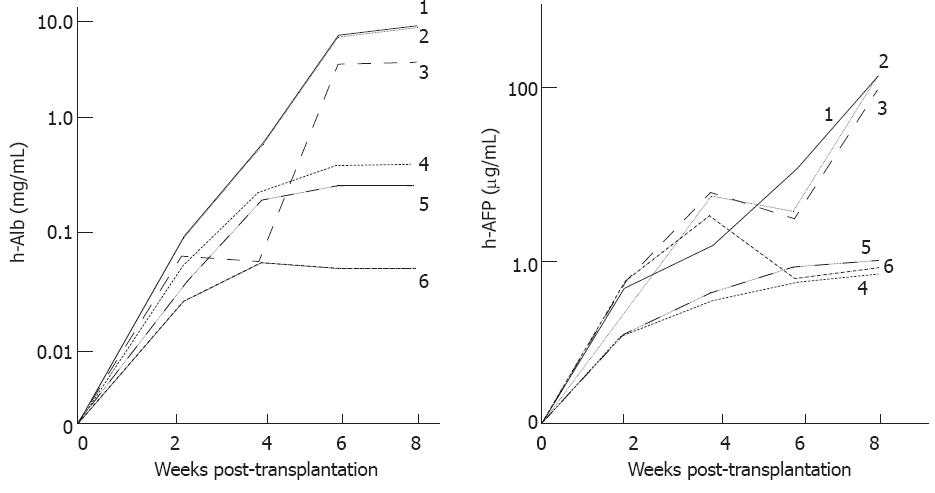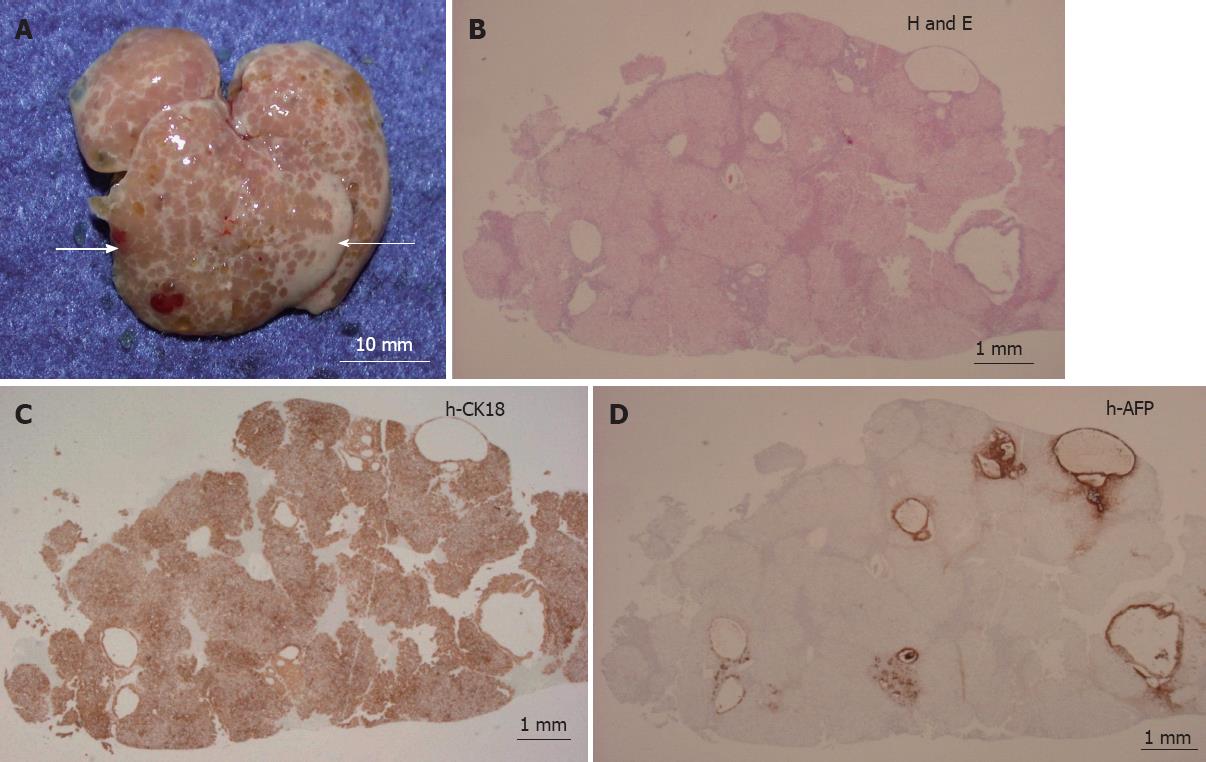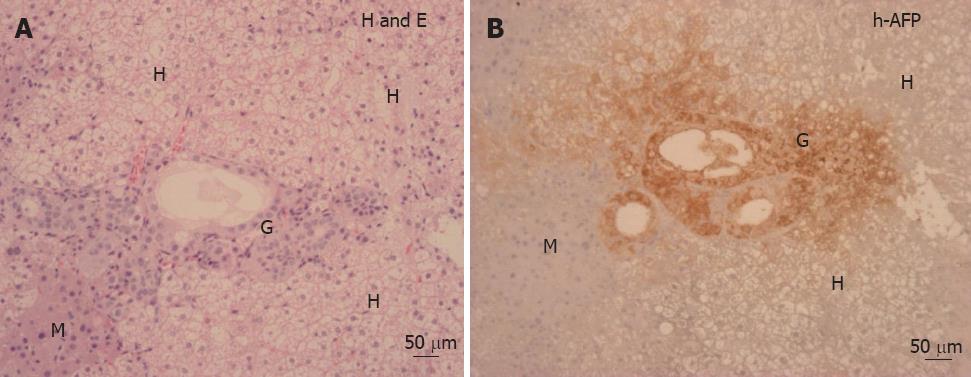Copyright
©2012 Baishideng Publishing Group Co.
World J Gastroenterol. Aug 7, 2012; 18(29): 3875-3882
Published online Aug 7, 2012. doi: 10.3748/wjg.v18.i29.3875
Published online Aug 7, 2012. doi: 10.3748/wjg.v18.i29.3875
Figure 1 Macro- and microscopic images of the liver from group A mice.
A: The urokinase-type plasminogen activator/severe combined immunodeficient mouse mice were transplanted with human gastric cancer cells (h-GCCs) and euthanized 56 d later, at which time the livers were isolated and photographed; B: The arrows in A point to concentrated regions of h-GCC colonies, and the sections were stained with hematoxylin and eosin (H and E). H and M in B represent h-GCC colonies and m-liver cell regions, respectively; C: The sections were stained with anti-human alpha-fetoprotein (h-AFP) antibodies; D: The square region in C is enlarged and shown.
Figure 2 Changes in the serum concentrations of human albumin and human alpha-fetoprotein in group B-mice.
Six mice (No.1-6) were co-transplanted with h-hepatocytes and human gastric cancer cells. The serum levels of human albumin (h-Alb) (left panel) and human alpha-fetoprotein (h-AFP) (right panel) were periodically monitored after the cell transplantation.
Figure 3 Macroscopic image of the liver of mouse No.
1 from Figure 2 at 56 d post-transplantation. A: The thick and thin white arrows point to h-cells [human hepatocytes (h-hepatocytes) and human gastric cancer cells (h-GCCs)] and m-liver cell regions, respectively; B: The liver was sectioned and stained with hematoxylin and eosin (H and E); C: The liver was sectioned and stained with anti-h-CK18; D: The liver was sectioned and stained with anti-human alpha-fetoprotein (h-AFP) antibodies. The h-AFP + (h-GCC) colonies were surrounded by less eosinophilic h-hepatocytes.
Figure 4 Magnified images of hepatic histology from group B mice.
A: A serial section of the liver in Figure 3 was subjected to hematoxylin and eosin (H and E); B: A serial section of the liver in Figure 3 was subjected to human alpha-fetoprotein (h-AFP) staining. H, G and M represent the areas occupied by human-hepatocytes, human gastric cancer cells (h-GCCs), and host m-liver cells, respectively. h-GCCs composed moderately differentiated adenocarcinoma with disrupted glandular structures.
-
Citation: Fujiwara S, Fujioka H, Tateno C, Taniguchi K, Ito M, Ohishi H, Utoh R, Ishibashi H, Kanematsu T, Yoshizato K. A novel animal model for
in vivo study of liver cancer metastasis. World J Gastroenterol 2012; 18(29): 3875-3882 - URL: https://www.wjgnet.com/1007-9327/full/v18/i29/3875.htm
- DOI: https://dx.doi.org/10.3748/wjg.v18.i29.3875












